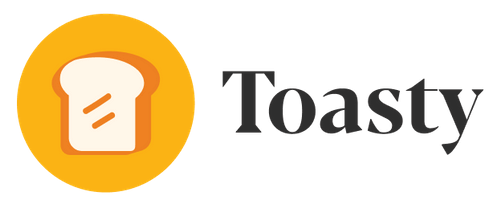Emmaus is an award-winning social enterprise working towards ‘fueling good’ and helping people, families, organizations, and communities thrive for good. Their mental resilience programs empower individuals, organizations, and communities to be resilient and prevent burnout. Their strategic volunteer partnerships programs build social purpose entities’ and volunteers’ effectiveness.
Since its founding in 2017, Emmaus has impacted over 6000 people and 150 organizations. But the pandemic put a spoke in the proverbial wheel earlier this year.
“We were on the verge of starting a big project with a health care institution to equip all their staff with mental resilience training, and the moment the pandemic hit, all trainings were canceled. It was a big blow for us. It actually left me thinking, ‘How should Emmaus proceed from here?’,” shares James Lim, Emmaus’ Founder and Lead Thrive-Synergist
In this story, we talk to James about what happened next and how Toasty became a gamechanger for their virtual training sessions.
The Challenge: Reducing Distraction and Engaging Participants
Even before he made the virtual shift, James was concerned about whether the work Emmaus did could translate to a virtual setup, and whether online training could be effective. He explains, “I had attended a few webinars, but I knew that they could be very one-directional, and people can get distracted. And I wasn’t ready to venture into an online training mode.”
So what changed? A session he didn’t have a choice but to conduct online built his confidence. But that meant he needed to address his most significant concerns. How could he encourage engagement and avoid a distracted audience?
“Oftentimes during webinars, I am very distracted. I could be checking email, Facebook, Whatsapp, or even doing my work. And if I have had that experience, I couldn’t imagine myself conducting training online.”
And then there was the question of engaging the participants. As an in-person trainer, James employed several facilitation techniques that required physical logistics like post-it pads and getting people to move around. The challenge was replicating that experience online.
James also wanted to continue his use of intentional design in his training sessions. Workshops with engagement are aplenty but not enough attention goes to design. In a virtual setup, this can get worse. A facilitator can’t just make provisions for activities; they have to play it carefully so that every participant has a part to play.
The Solution: Using Toasty, A Platform Focused on Engagement
It was this quest to find a video conferencing platform that would engage participants and enhance learning that led James to Toasty. He was looking for an interactive platform that would sync seamlessly with his training style.
“I was actually looking around for quite some time. There were a few key things I needed. One obviously was the ability to break people into breakout rooms, which is very important in all my trainings. The second was the user interface. I needed something that was friendly and which allowed me to conduct activities easily. With Toasty, I was and am amazed at how many features Toasty had and continues to develop. Something that really caught me was how it was built around engagement.”
Technology can provide excellent opportunities to enhance learning. And for Emmaus, shifting to Toasty helped recreate offline activities virtually and enhanced some key experiences. James expands, “One of my favorite features is the Miro Whiteboard integration. Like I mentioned before, I use activities with post-it pads and pens, and I could replicate this offline experience online. But I also loved how easily I could break people into breakout groups using icebreaker questions. And the pre-built templates. In the new version of Toasty, there are a lot more templates. So the guesswork in planning a session reduces, and that is very helpful.”
With much of Emmaus’ work focused on emotional health, depression, burnout, and building mental resilience, open conversations aren’t easy. Without the ability to answer questions about these sensitive issues anonymously, the session can nosedive. Toasty’s Anonymous Response feature helps participants voice their thoughts in awkward scenarios.
“I can ask a very simple question like, ‘How many of you have had depression before?’ or ‘How many of you have experienced burnout?’. If it’s not anonymous, then people either don’t participate or give a socially desirable answer. So I think that’s definitely something that helps.”
The Result: Enhanced Training Sessions With Engaged Participants
Toasty helps Emmaus and James give participants a voice and eliminate a lecture-like session where one person talks and the others are passive. James underlines this.
“Toasty keeps the learning experience refreshing. It’s not your regular meeting where everyone comes and knows someone is going to be talking. You have different activities to be able to engage people. Participants are a part of the action instead of the session being one-directional. It really adds to the learning experience.”
Toasty also “forced” James to become more careful and intentional about his sessions to avoid surprises.
As a result, the virtual capability building sessions and mental resilience programs have stimulated the learning experience and kept Emmaus’ mission of fueling good by feeling good alive.
And just as we reach the end of the conversation, James adds, ‘Toasty has so much potential. I usually conduct my sessions and share some ideas with Kevon* and the next time we see developments. It is unlike many other products I have seen.”
*Kevon Cheung is the CEO and Co-founder of Toasty.
